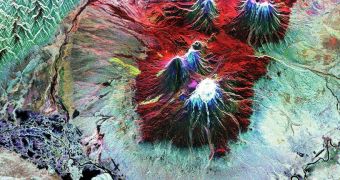The northern tip of the Pacific Ring of Fire is boiling. Klyuchevskoy, a stratovolcano located in the north central part of the Kamchatka Peninsula and the highest mountain of this peninsula (4,649 m or 15,470 ft tall) is spitting ash up to 32,000 ft (10,700 m) in the air and has diverted air traffic in routes towards the Far East. It is the largest eruption to take place in the North Pacific in the last 10 years and is offering to students at the University of Alaska Fairbanks a unique opportunity to collaborate with researchers, as well as state and federal agencies.
The Klyuchevskoy eruption is tracked locally by students and a team from the Geophysical Institute and the Alaska Volcano Observatory (GI/AVO) who analyze the information to deviate the air traffic around perilous volcanic ash clouds. The ash is monitored through satellite, Web cam and Puff, to get a three-dimensional understanding of the issue.
The analyzed data is publicly presented, to help thousands of people in the area avoid risks and for the flying companies operating through the North Pacific.
Klyuchevskoy has been erupting since January, but the largest eruption started in June 28, 2007, creating a 1,360-mile (2.200 km)-long band of ash, spreading from the Sea of Okhotsk to the Aleutian Archipelago in western Alaska, filling dangerously well-used air routes with volcanic ash that impedes aircraft flight.
"It's best for us to keep an eye on Klyuchevskoy. Any ash that travels to Alaska is drifting right through the superhighway of air travel to the Far East. It's critical for us to understand how distal plumes are moving." said Ken Dean, a professor of geology specializing in remote sensing with the Geophysical Institute and the Alaska Volcano Observatory.
The volcanic ash is extremely fast: it reached Unimak Island (in the Aleutians) in just one day. That's why constant updated monitoring is crucial. Daily, the team examines the state of over 150 active volcanoes in the North Pacific.

 14 DAY TRIAL //
14 DAY TRIAL //